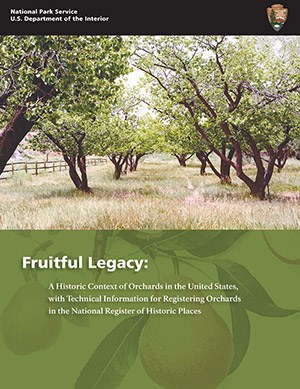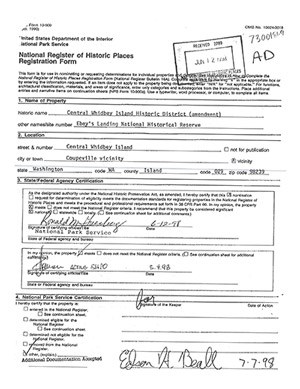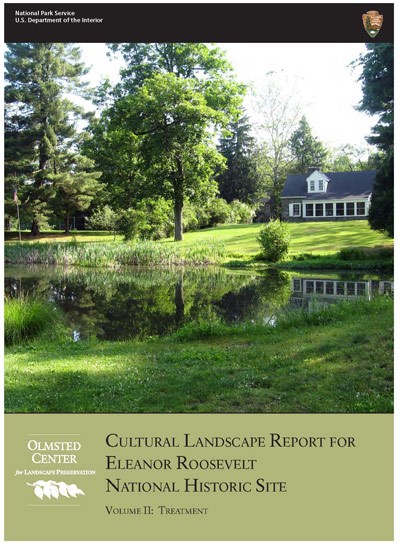
The Role of Research
- Provide information for management decisions and compliance with preservation law and maintenance,
- Assist in determining appropriate treatment, and
- Support interpretive programs.
Identification
Section 110 of the National Historic Preservation Act requires that the NPS identify and nominate to the National Register of Historic Places all cultural resources that appear eligible. This includes listing cultural landscapes as historic districts or historic sites. Historical areas of the national park system are automatically listed in the National Register when they are established by law or executive order, but contributing landscape resources still must be documented for the register.
Conducting research and preliminary field surveys determines the existence of cultural landscapes. Identifying the significant characteristics and features of a landscape involves understanding its historic development and use, modifications over time, as well as any ethnographic values and affiliations. The preparation of a National Register nomination is based on this collected information, including a base map and photographs.

Documentation, Evaluation, and Registration
Documentation of cultural landscapes involves the use of primary and secondary sources, review and assessment of archeological records, and field investigations to determine the extent and condition of historic and contemporary landscape features. Maps, plans, drawings and photographs are prepared as part of the baseline documentation.

NPS Photo
Significance is determined by relating a landscape and its existing characteristics and features to its historic context. The landscape must be associated with:
- events, activities, or developments that were important in the past
- the lives of people who were important in the past;
- significant architectural history, landscape history, or engineering achievements; or
- the potential to yield information through archeological investigation.
The integrity of a cultural landscape is determined by the degree to which the landscape characteristics that define its historical significance are still present. Because some landscape characteristics (such as vegetation and use) are dynamic, integrity also depends on the extent to which the general character of the historic period is evident, and the degree to which incompatible elements are reversible.
It is important to consider how such changes affect the landscape as a whole and the degree to which they impact or obscure the landscape's character and integrity. With some vernacular and ethnographic landscapes, change itself is a significant factor and must be considered in assessing integrity.


Cultural landscapes are listed in the National Register of Historic Places when their significant cultural values have been documented and evaluated within appropriate thematic contexts, and physical investigation determines that they retain integrity.
Cultural landscapes are classified in the National Register as historic sites or historic districts, or they may be included as contributing features of larger districts.
The Cultural Landscapes Inventory (CLI) is a database of all cultural landscapes in which the NPS has or plans to acquire any legal interest. Its purpose is to identify cultural landscapes in the national park system and provide information on their location, historical development, characteristics and features, condition, and management. The CLI assists park managers in planning, programming, and recording treatment and management decisions.
Completed CLI reports are available for public viewing through the Find A Cultural Landscape page on this website, or by request.

NPS/OCLP
Cultural Landscape Report
A cultural landscape report (CLR) is the primary guide to treatment and use of a cultural landscape.
Typically interdisciplinary in nature, the CLR includes documentation, analysis, and evaluation of historical, architectural, archeological, ethnographic, horticultural, landscape architectural, engineering, and ecological data. It analyzes the landscape's historical development, evolution, modifications, materials, construction techniques, geographical context, and use in all periods, including those deemed not significant. Based on the analysis, it makes recommendations for treatment consistent with the landscape's significance, condition, and planned use.
The scope and level of investigation vary depending on management objectives. It may focus on an entire landscape or on individual features within it. Before any decision regarding treatment of a landscape, Part 1: Site History, Existing Conditions, Analysis, and Evaluation, or a Cultural Landscape Inventory report is completed.
Resources
Last updated: July 7, 2021

